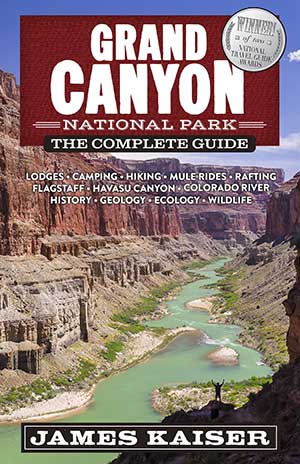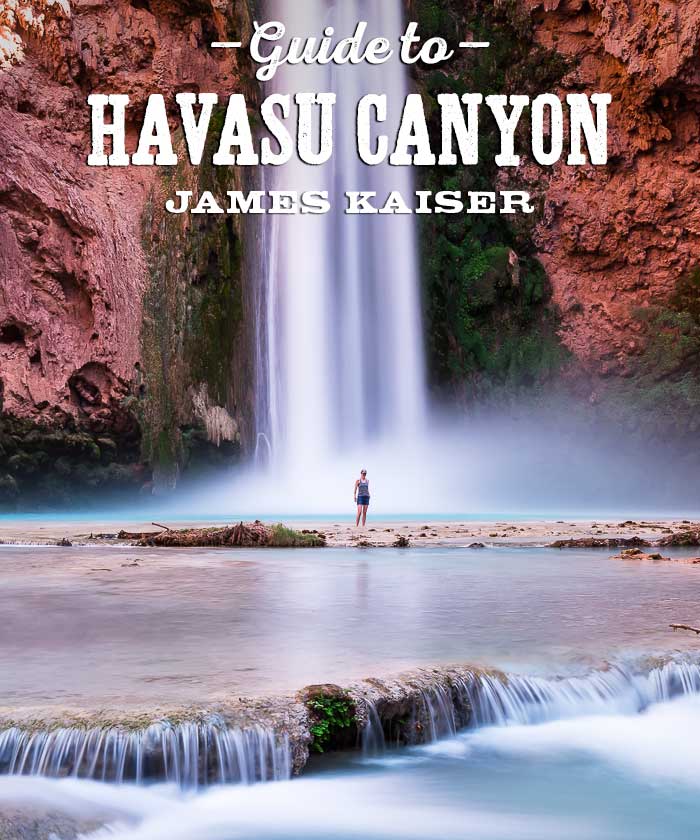
Havasu Canyon is one of the highlights of Arizona. To visitors in the know, Havasu Canyon’s striking blue waterfalls conjure up images of a remote desert paradise. This remarkable destination is also home by one of the Southwest’s most fascinating native tribes.
Havasu Canyon
Located about 35 miles west of Grand Canyon Village, Havasu Canyon is one of the most beautiful places in the Southwest. For over 700 years, it has been the home of the Havasupai, the “People of the Blue-Green Water,” who derive their name from the vibrant turquoise stream that flows through the center of the canyon. Today roughly 450 Havasupai continue to live in the tiny village of Supai, which is located 2,000 feet below Grand Canyon’s rim. A short distance from the village are Havasu Falls and Mooney Falls—two of the most stunning waterfalls in America.
See also: Havasu Canyon Hotels
Although Havasu Canyon only receives an average of nine inches of rain each year, a natural spring near Supai releases nearly forty million gallons of water a day. The color of the water, an electric blue more typical of the Caribbean than the desert Southwest, is caused by natural minerals dissolved in the water.
As Havasu Creek flows down the red rock canyon, it tumbles over dozens of beautiful pools and cascades. The creek also supports a lush riparian habitat of cottonwood trees, maidenhair fern, and scarlet monkey flowers.
Is Havasu Canyon too good to be true? Almost. Due to its rugged, remote location, getting here is a bit of a challenge.
Hualapai Hilltop, the jumping-off point for the eight-mile hike into the canyon, is reached after a long drive along desolate roads. From the hilltop, you descend into the canyon by foot, on mule, or by helicopter. No roads lead to Supai, which is the last town in the United States where daily mail is still delivered by mule.
Furthermore, all visitors to Havasu must obtain a permit before entering the canyon. To prevent overcrowding, the Havasupai limit the number of daily permits issued.
Because Havasu Canyon remains cut off from much of the outside world, the pace of life here is distinctly different. The Havasupai continue to speak their native language, horses and dogs freely roam the dirt roads, and illumination is mostly provided by the sun and the moon. All this, combined with breathtaking natural scenery, makes Havasu Canyon one of the most unique destinations in North America.
Havasu Canyon Waterfalls
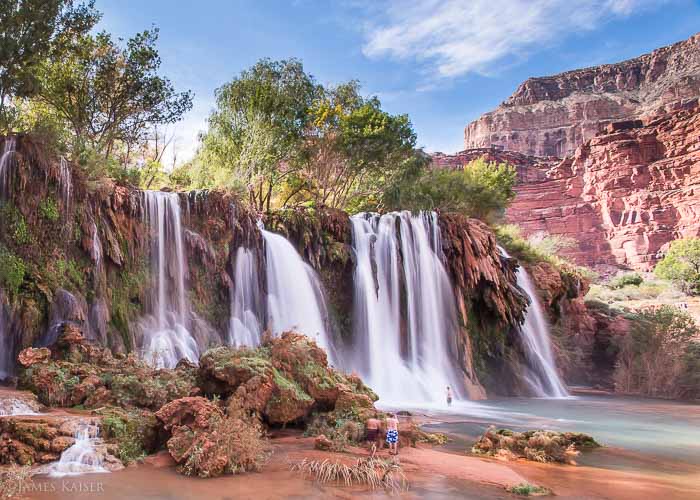
Navajo Falls
In August 2008 a flash flood tore through Havasu Canyon, reshaping the scenery between Supai and Havasu Falls. The flood ripped out vegetation, carved out a new watercourse, and created two “new” waterfalls. The upstream waterfall, called Navajo Falls, is about 70 feet high. It used to be called “Fifty-Foot Falls” until a flash flood buried it in sediment sometime around 1940. The 2008 flood simply re-exposed the old waterfall.
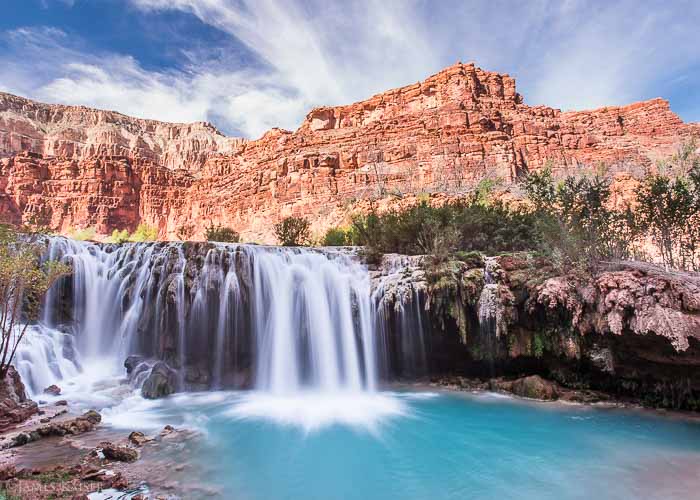
Little Navajo Falls
Little Navajo Falls, which lies just downstream of Navajo Falls, is about 30 feet high. It tumbles into a beautiful pool just before a sharp bend in the river.
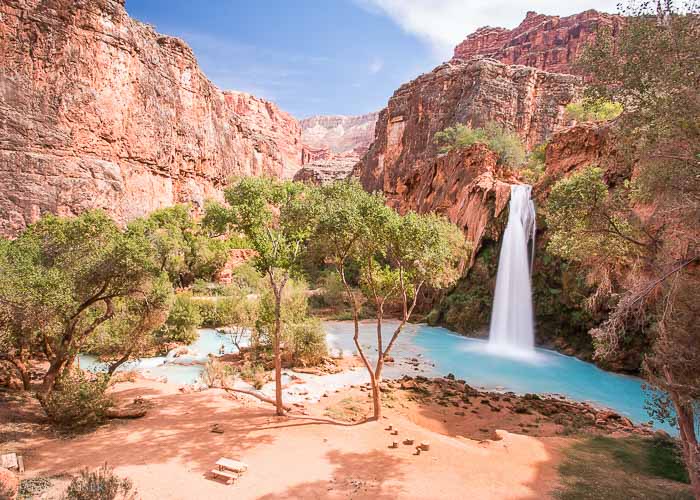
Havasu Falls
Havasu Falls, the star attraction of Havasu Canyon, is located roughly half a mile past Navajo Falls. As the trail drops down along the sheer western wall of Havasu Canyon, the roar of the falls grows louder. Suddenly, Havasu Falls appears on your right. At this point you’re at eye level with the top of the 90-foot falls. Continue down the trail to reach several well-trodden side trails that lead to a beach area shaded by cottonwood trees. Although often crowded in summer, the beach is one of the most spectacular swimming holes in Arizona.
A century ago, Havasu Falls looked completely different. Back then the water tumbled over the cliff in a 200-foot wide curtain of water, and it was called Bridal Veil Falls. In 1910 a flash flood roared through Havasu Canyon and knocked out a large notch in the cliff. Suddenly, the water was channeled into a much narrower—and much more spectacular—waterfall.
Other flash floods have been far less kind. In 1993 a flash flood destroyed several beautiful travertine terraces at the base of the waterfall that formed a series of cascading pools. Then, during the flood of 2008, the beautiful “apron” that defined the falls for decades was destroyed. The flood knocked out a small notch in the apron, creating a narrow chute that forms a far less dramatic waterfall.
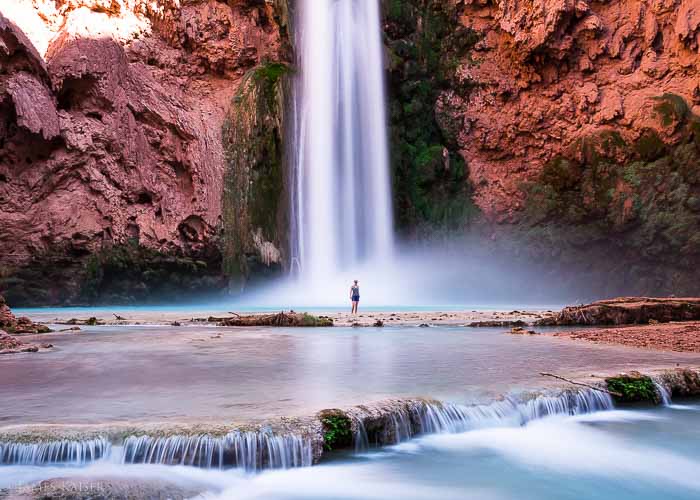
Mooney Falls
At 196 feet, Mooney Falls is the tallest waterfall in Havasu Canyon. To get there, follow the main trail one mile past Havasu Falls to a stunning overlook at the end of the campground. The path to the base of the falls is an Indiana Jones-style adventure that involves scrambling through a tunnel carved by 19th-century miners, followed by a slippery descent down a rickety ladder.
The Havasupai call this waterfall “Mother of the Waters,” and they consider it their most sacred waterfall. The name Mooney Falls comes from a tragic accident that occurred in 1880, when a group of American prospectors entered Havasu Canyon looking for gold. Their progress was halted when they reached the sheer cliffs surrounding the waterfall.
A man named Daniel Mooney volunteered to be lowered down by rope, but on the way down his rope became stuck in a jagged crevice. As his friends struggled with the rope, it began to fray. Suddenly, the rope snapped, and Mooney fell to his death. Unable to reach Mooney’s body, the prospectors abandoned their search and went home. Ten months later they returned and built a ladder to the base of the falls. By that point, Mooney’s body had been encrusted in a fresh layer of travertine.
A few decades later, Mooney Falls was taken from the Havasupai by the federal government, and a private company attempted to build a hydroelectric plant here. Before the power plant was completed, however, a flash flood tore through the canyon, destroying the machinery and bankrupting the company. In 1975 the government returned the waterfall to the Havasupai tribe.
